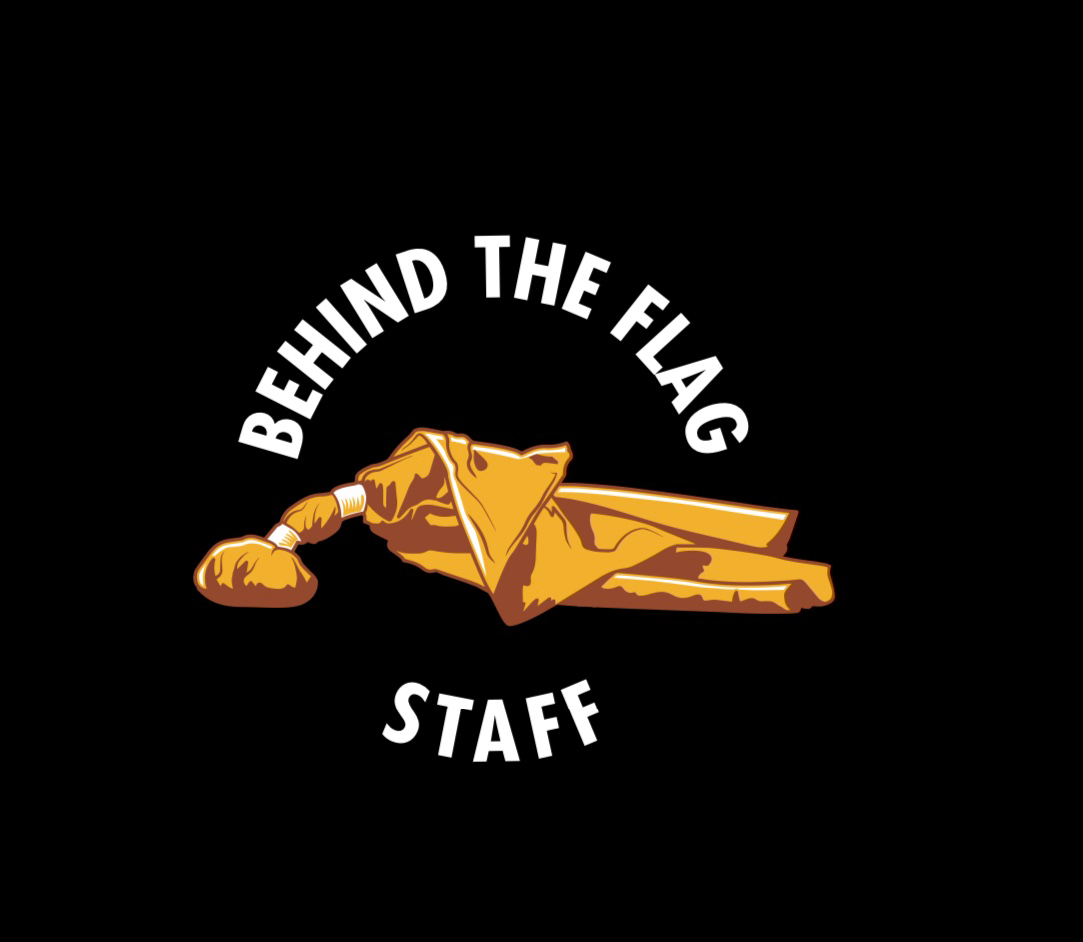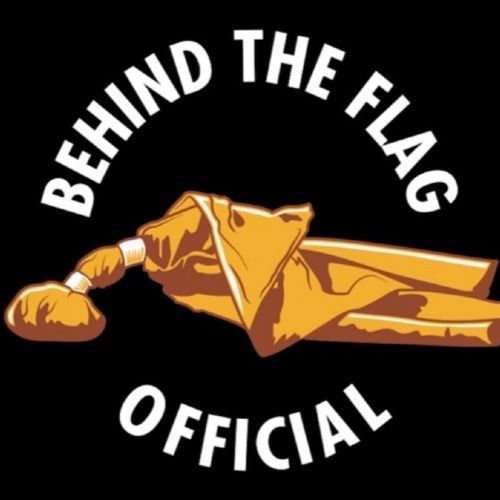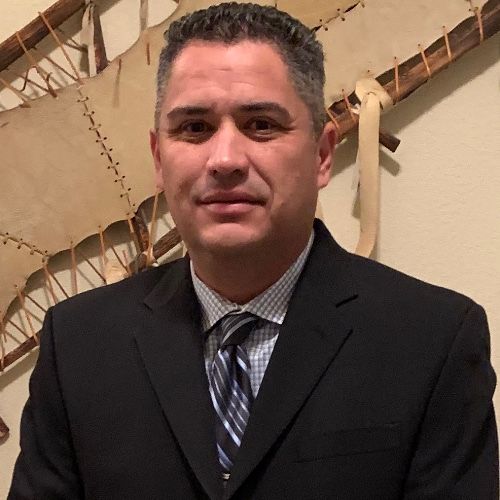Abram Anaya, Mountain West Conference Center Judge, Film Evaluation
Abram Anaya, Mountain West Conference Center Judge, Film Evaluation
Dana Pappas (1m 5s):
I want to welcome you to our second coach's and officials webinar for the sport of football for our spring season. As we were talking about before we started recording, this is a great way for us to stay connected with sports when there are none, which is sad, but this has been a great way for all of us to kind of stay connected with officiating and with sports and interscholastic athletics as a whole. The purpose of today's webinar is actually to talk a little bit about our Film process or evaluation process for then New Mexico activities and New Mexico officials association.
Dana Pappas (1m 39s):
And with us today, we have one of our very trustee, a very relied upon evaluators. Abraham is from Santa Fe and he's a former high school official who works division one football now. And he's been a great asset to us as a, as an off field high school official with in regard to Evaluation. Uh, he is very fast at getting them done. So when I need something done quickly, because of that matter, I'm able to send them to him.
Dana Pappas (2m 9s):
And I usually get a response back same day. So it's been great having Abraham on our staff. I'm just going to give a very quick rundown about our Film process with the enemy and how that happens. And then Abram's going to do more of a deep dive into what he's looking for when he receives the Film. So one of the questions I get rather frequently from coaches is when we send in our clips, what happens, um, I think that there's a perception that they go into a black hole, never to be found again.
Dana Pappas (2m 40s):
And that is not the case. When we receive clips from coaches, either through huddle or other means, uh, we do send them to one of our evaluators to take a look at. Sometimes it's just clips. Sometimes it might be an entire game and the coaches will put some times comments within the context of huddle. They'll send an email that we include to our evaluator. We do have three individuals who we heavily rely upon for Film Evaluation Abraham is one of them, and then we have two other officials.
Dana Pappas (3m 11s):
One is a retired NCAA football and high school official. And then we have an NFL official who actually helps us as well. So you've got three very capable people who do that. They took take a look at it and then they send us a commentary and it'll talk about mechanics issues, rules, issues, anything that they saw that could be a concern at the same time. If a coach sends in what they feel is an incorrect call, the evaluator will take a look and explain to them why it either was or wasn't.
Dana Pappas (3m 44s):
So we do look at a lot of that. We never look at officials judgment. We're only looking at mechanics and rules misapplications if that's the case. So once we get that, that commentary back from the evaluator, we take it and send it to them that was involved on the game, as well as that a signer. So that way the assigner can use it for training Evaluation as well as to help make determinations with regard for close season assignments. So there is a lot involved with, with that Film in addition, we take that commentary and send it to the athletic director.
Dana Pappas (4m 22s):
Sure, cool. That sent him the clip. If we have the coach's email address, we'll actually send it to that coach directly as well. A lot of times we don't get it with the huddles, a clip, so we'll just send it into the AB and the ADSL to pass that information onto the head coach. So that's really what happens from our standpoint, just so you understand the process. So at this time I'd like to turn it over to Abraham because he can tell you what he's looking for and what our other evaluators are kind of looking at as they go through the process. So Abraham, thank you for taking time out of your afternoon and, uh, I'll turn it over completely to you.
Dana Pappas (4m 58s):
If you have questions during the course of this, please feel free to type them in the chat box and I'll, um, Flag Abramson a lot of know that there's a question that we can take those as we go. So if you look at the bottom of your screen, there is a chat area there and you can just type it to that area. So without further ado, Abraham,
Abram Anaya (5m 21s):
Thank you, Dana. Uh, welcome everybody. Thank you. I really appreciate the honor of being here, talking with you folks. I've been a member of the NMA since 2001 and Oh, like most, most of you know who I am. I just relish the opportunity to give back. This is the best way I can do it. I've been studying football, uh, not only as a player, but as a official for well over 20 years. And, uh, as, uh, Dana had told you previously, I grew up and the New Mexico system, I came through the enemy, worked at a high school ball for many years.
Abram Anaya (5m 58s):
Uh, did some lucky enough to do some state championships. And then I moved into the division too, uh, arena where I was a referee in the Rocky mountain, athletic Conference. And eventually I moved into division one and I got the opportunity to work for the Mountain West. And I been working with the CFO West, which covers the Mountain West and the big 12 since 2014. So when I look at these Film I employ a lot of things that I've learned over the years. I've been to numerous conferences across the country with the big 10.
Abram Anaya (6m 30s):
Yeah, the big 12, the pack 12 The Mountain West and the Conference USA. So we'd look at, well, I do, when I start to put together, the films is I want to see is the official looking at his area responsibility. Are they looking where they're supposed to be looking? And if they see the fowl and they Judge in their judgment, that it was not a foul or didn't rise to that level. And that is exactly that it's judgment. And we don't, we will, you don't really beat them up over that.
Abram Anaya (7m 1s):
And why you need to understand from the official standpoint is the game is very fast. In high school, you have five officials looking at 22 players, and they need to make a judgment as to whether or not it's a fall or not a foul weather Rose to the level or, and didn't rise to the level within a fraction of a second because they can't dwell on it. If I see a holding on my tackle and I stare at that holding and I stay looking at that holding, and the play goes by me, who knows what I'm going to miss. I don't have the extra eight set of eyes that I would in college or in the NFL to where they can see something else and I need to transition to it.
Abram Anaya (7m 40s):
So we take that into consideration. And one of the biggest questions we get from the coaches is did this rise to the level of a fowl and I'll give the coaches a lot of credit. A lot of the coaches really do understand the philosophies in which we officiate football. If the fall is far away from the plate, did it have impact on the plate? Was there an effect on the play? And if there's no effect, most coaches won't even bother sending that in because they know we're not going to officiate to that.
Abram Anaya (8m 11s):
Nobody wants to go to a football game and see 70 flags on the field that just ruins the game for everybody, the players, the fans, the coaches, the parents, and nobody wants that. So they know we're going to call what needs to be called. And a lot of the coaches are really, really good about sending those in. Yes, there are some times where the officials and their judgment and we would have liked to have seen a particular file. And that's when we start to break down and still why The official did not call this particular problem.
Abram Anaya (8m 42s):
Maybe they just didn't see it. Maybe like I said, a second ago, they're caught up, I don't know their piece of the action that just, they didn't see quite the whole action that developed into the fault. And the last thing we want our officials to do as guests and that's okay, the game was very fast. These young athletes, again, bigger, every single year, they get faster every single year. And sometimes with only five officials or four, we're going to miss things. And we get that. And we understand that. So what we try to do is use this platform as a way to train the officials, to not only look in the area where they're supposed to be their area of responsibility, but transition quickly from one section to another section.
Abram Anaya (9m 22s):
So they can see the entirety of the play and officiate, where they should be officiating. Now for the officials that are on the conference call. One thing that I think we all need to understand is when we break down this Film yes, I may give you an incorrect call, but it is absolutely not a judgment on you as an official. It just means for this particular play, we would like to seeing you either not call this or it wasn't quite the fall that we thought conversely, to all the coaches out there.
Abram Anaya (9m 52s):
There's a lot of times when I get Film from the coaches saying, I believe this is a fall. And if I disagree respectfully, all articulate as to why it does not rise to the level of fall, or maybe that's confused as to what the fall may be with. That said, when I take a look at the Film, I take a long time on each and every single play. And I love to take, break it down to mechanics of the officials on the field, where they're looking at the individual action of the player.
Abram Anaya (10m 23s):
So we get a real good gauge of what is a fall and what is not a fall ball. We want call them what we don't want to call it with. That said, coaches, I asked you when you send it a clip for that, you have a specific file that was either called on the field or not called on the field. Please send me a simple narrative. It doesn't need to be anything extreme. Take a look at the action of the right guard. Take a look at the block from the free safety, just so I know where to look. Cause when I start breaking down these and some coaches will send me in, Hey, I want you to take a look at, play 38 and break down this particular play and I'll spend the half an hour on.
Abram Anaya (11m 1s):
And sometimes I won't find anything. And I think that frustrates the coach because I'm not addressing what they want me to address. And I want to address what you want me to address. If you send in a game and I've done this a number of times where Dana will send me an entire game and say, coaches are asking that to do a full Evaluation. I want you to understand doing a full evaluation on a game, takes me anywhere from three to five hours because I take this very seriously and I love to break down and I literally break down every single point and look at it front, regular speed, slow speed.
Abram Anaya (11m 34s):
I fronted back and I take it all the different aspects of the entire game. So that does take a while. If you have something specific that you want me to find, or you want me to address, please note it that way. I can have an idea of clip, whatever this particular action happened, or I believe this was a fowl and was not called at some point in time, I would love to see the NMIA transferred or transitioned to doing file reports. Just like we do at the college level, where ever you follow the throne, herb Flag that's thrown on the field, whether it's picked up or not needs to be reported.
Abram Anaya (12m 9s):
If I were to get a fall report and then I can go to every specific play. That's wonderful because then I can tell you exactly what the followup was called. And then I construct a breakdown, whether or not it was truly, and honestly, and fall. Now I understand that that's not going to be feasible in all cases now and the bigger schools. So the five 86 schools, I believe that should be something that it could be addressed and maybe should be addressed in the near future. As a possibility, I think it would help advance our training quite a bit.
Abram Anaya (12m 40s):
So these are just things that I particularly wanted to express this morning to let the coaches know if you want me to find something, please give me some kind of small synopsis, tell your Film Cruz. If there is a foul on the field, record, the referee record the referee. That way I could see the referee's mechanics and just based off of what his signals are. Usually I can break down exactly what the fall was. And in most times I can tell you exactly what the player was called on without actually knowing the number.
Abram Anaya (13m 11s):
Cause in most cases it's pretty obvious. So with that, I want to open it to both of the coaches and officials ask me any question, anything that you, any, anything that you would like to know about the process or what we're looking for or how we break down these films? Okay. Abram first question. How important would, Film be for dead ball officiating, between and plates?
Abram Anaya (13m 43s):
So the dead ball officiating. I know a lot of cases I get placed from the coaches saying, I want you to see the action or the, they say there is no Film for this particular action. Have your Film crews continue to record just a little bit longer after the play, because a lot of times we'll have a late hit and it's significantly late to where the film's is cut off already. And I have no idea what happened. A punch was thrown, or this kid has hit way out of bounds or this word and the player is getting up off the ground.
Abram Anaya (14m 16s):
He was shoved back to the ground and I just can't see these. So tell the Film Cruz, give me at least two or three seconds after the play. It's not going to waste any of the extra Film because it's all digital. It's not going to waste any extra time uploading it. It's it's all the exact same. And this is actually very valuable. So I could see exactly what the officials are doing. As soon as the play comes to an end, I want to make sure that we're and that we have appropriate dead ball officiating that they just don't go into.
Abram Anaya (14m 47s):
Okay, let's get ready for the next play. Let's start to are mechanics. And after the end of every single play, you should have a mechanic, just like a pre snap routine should have a dead ball routine, and we can address those. And this is a great opportunity to teach and those situations.
Dana Pappas (15m 8s):
Thank you. Next question. How do you evaluate targeting calls that were turned into you for review?
Abram Anaya (15m 17s):
That's a great question. So player safety is at the top of everybody's list. As you, these young player athletes, like I said earlier, they're getting bigger again faster. We will always err, on the side of safety, if it's a tweener, I will support it 100%. If it's a tweener on the field, like I said, at the beginning of this, you guys are making that split second judgment on the impact. That's very violent, very fast through all the Flag you'll be supported. And I think the enemy will back me up on this one, 100%.
Abram Anaya (15m 50s):
We don't want, we want to teach these athletes to lower that strike zone. We want to teach them not to lead with the crown of the helmet. We want to make sure we don't get any young person hurt. Lastly, we want us to see an ambulance roll out onto that field. And I believe the coaches I've seen, I've got a number of targeting plays Center from the coaches and I've never once had a coach tell me that The that The Oh, officials on the field completely blew this targeting. It should have never been called. What I usually get is yes, this was a high hit.
Abram Anaya (16m 22s):
It was up bad hit. I don't believe it was targeted because he hit with the shoulder and it was shoulder to shoulder. And I usually respond back with, yeah, that was a super violent at high hit. Please teach your athletes to lower that strike zone because if it is anywhere up here, we're going to Support the official 100% it's player safety. And I am per I can guarantee you, Dana can agree with me on that one.
Dana Pappas (16m 50s):
Absolutely. And we do get a lot of those films in particular about targeting and you know, Abrams did a really good job explaining to a coach. Why or why not? It might've been ruled in that way. Again, we aren't looking at, uh, negating officials judgment, but we want to be able to explain the rule to the coach. If they're, you know, maybe they're unclear because this is all part of the educational process. Um, couple more questions popping up. Next one is how many of your reviews are blindside blocks? Clarification's got, how many do you think you get on those?
Abram Anaya (17m 23s):
I would say I get more blind side blogs that they're targeting to get you to guarantee you that a holding probably get the most of, because holding is that one fall. That is so darn subjective. Even at my level, you really have to gauge at my, my boss always tells us we're instructed when you throw a Flag for something like a blindside block or a holding, you're now setting the bar of words, you're going to call whole game. So if you're going to let the tugs, the slight toes, the slight pools go, you better let it go for the whole game.
Abram Anaya (17m 55s):
And they're not called that in the late in the fourth quarter. If you're going to call those tugs, call them early. And now you're letting both coaches know that this is how the game's going to be officiated. So for the blindside block, I think what I have seen is a lot of the coaches are teaching their players how to avoid that fowl. They're doing a great job of what's called the praise block, where they just like a basketball. You're just stand your position. Some, raise their hands up like this so that they're just nothing more than a screen. So you're not attacking now. You're not delivering force, which makes it a fall.
Abram Anaya (18m 27s):
Or they're also teaching. Put your hands out, put your hands down and walk. Most of these athletes are so strong that they can extend their arms. And you can literally decathlete somebody with your arms fully extended and avoid being called a foul now, and the college level. We're also seeing this too, but when they, the blindside blocks at this level are much more violent. So I'm really glad to see that we're getting this out. And again, I don't overthink this. If you think it's a blindside block and a lot of things, a lot of times I get the coaches a little give, send me in a clip saying this wasn't a blindside block.
Abram Anaya (19m 1s):
The guy saw coming, you'll have, The the person being blocked. He's focused here. The blindside blocks coming in from the side, from the perpendicular. And right before the hip, those delivered, you'll see the head move slightly. And you'll see a dip in the shoulder, which means now technically that player did see a coming and he's now protected him self some degree. That's still pretty blind side block. If you can't fully defend yourself and you're just split second reaction and you're getting wiped out.
Abram Anaya (19m 33s):
That's what this that's what the intent of this foul is to prevent that. So tell your players, if you're going to come in from the side, you're just as effective two hands




